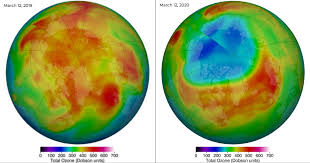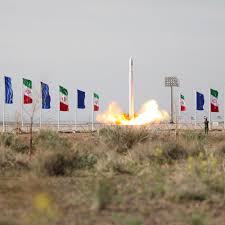
Scientists have confirmed that the largest hole in the ozone layer which was 1 million square kilometers wide over the Arctic has now healed. The information has been confirmed by Copernicus ECMWF — A European satellite system which has found that the largest ozone layer hole over the Arctic has closed.
Daily Current Affairs Quiz 2020
Key-Points
The hole in Ozone was first identified by scientists in March 2020. The development of the hole was confirmed by Copernicus Climate Change Service (C3S) and Copernicus Atmospheric Monitoring Services (CAMS) by the European Centre for Medium-Range Weather Forecasts (ECMWF).
Such holes in the ozone layer are quite common above the Antarctic at the South Pole especially during July to September but the ozone layer hole above the Arctic at this time was unusual.
The scientist stated that the closing of the hole has nothing to do too with the reduction in levels of pollution amid lockdown. But it is because of the polar vortex, high-altitude currents that are responsible for bringing cold air to polar regions.
C3S (Copernicus Climate Change Service) is the European Union’s climate monitoring service. C3S are vital to study and monitor climate change adaptation. It provides climate and climate change information and knowledge by means of accessible, timely, reliable, and user-oriented products.





